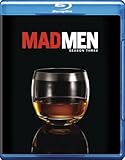
Absinthe Sazerac – America’s First Cocktail
I had a first attempt at making a Sazerac at home the other day, but wasn’t quite satisfied: perhaps I used too much Absinthe. Will try again as soon as I am able…
This variant ran in the NYT in 2009
Sazerac
- 1/4 ounce (1 1/2 teaspoons) Herbsaint, absinthe or pastis
- 1/2 teaspoon sugar
- 2 dashes Angostura bitters
- 3 dashes Peychaud’s bitters
- 2 ounces (1/4 cup) good rye whiskey
- 1 lemon, unwaxed and scrubbed.
1. Place a short rocks glass in the freezer to chill.
2. Add the Herbsaint to the chilled glass, swirl it around to give the inside of the glass a thin coating, then discard the excess.
3. Place the sugar in the bottom of a mixing glass with a few drops of water. With a wooden spoon or cocktail muddler, muddle down the sugar, add the bitters and keep muddling. Add the whiskey and stir well, until the sugar is dissolved. Add enough ice to fill the mixing glass three-quarters full and stir for about 20 seconds.
4. Strain into the coated glass and, using a vegetable peeler or sharp knife, slice off a piece of lemon peel. Squeeze the peel’s oils over the drink and either discard the peel or drop it in the drink.
Adapted from “Artisanal Cocktails” by Scott Beattie.
(click here to continue reading Tales of a Cocktail | Sampling Sazeracs in New Orleans – NYTimes.com.)














